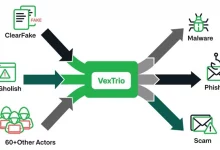7 Strategies To Encourage Women In Cybersecurity
In the fast-paced world of cybersecurity, diversity isn’t just a buzzword; it’s a necessity for success. Yet, the door to this vital sector remains disproportionately closed to women.
Despite the commendable efforts of organizations like ICMCP, WiCyS, WoSEC, and The Diana Initiative, women comprise a mere 25 percent of the cybersecurity workforce. This glaring gap not only hampers our ability to tackle the growing threats in cyberspace but also stifles the innovation that thrives on diverse perspectives.
With the industry facing an acute shortage of skilled professionals, the need to embrace a wider talent pool has never been more urgent. Beyond filling immediate roles, fostering gender diversity is essential for nurturing healthy competition and advancing towards true gender equality.
The World Economic Forum’s Global Gender Gap Report 2023 highlights the magnitude of the challenge ahead. While more women STEM graduates are entering the job market each year, the transition from university to the workplace reveals a concerning trend.
Despite comprising 29.4% of entry-level positions, women experience a notable decline in representation as they climb the corporate ladder. In top-tier leadership roles like Vice Presidents and C-suite executives, female representation dwindles to 17.8% and 12.4%, respectively.
In the field of artificial intelligence (AI), although there has been a significant increase in talent availability overall, with a six-fold surge between 2016 and 2022, progress in women representation remains sluggish. Currently, women make up approximately 30% of the AI workforce, marking a modest 4 percentage point increase from 2016.
Furthermore, another report by WeAreTechWomen highlights that the disparity in female representation extends beyond entry-level roles. Only 17% of Fortune 500 Chief Information Security Officers (CISOs) are women, this translates to only 85 out of 500 CISO positions being held by women, exacerbating the gender gap across all levels of the industry hierarchy.
Bridging the gender gap in cybersecurity, and in all sectors, is a marathon, not a sprint, requiring dedication and continuous effort across generations As we celebrate International Women’s Day under the banner of “Inspire Inclusion,” let’s embark on a journey together. Let’s unveil practical strategies to empower and embolden women to claim their rightful place in the cybersecurity space.
7 Strategies to Encourage Women in Cybersecurity Careers
To encourage more women to pursue careers in cybersecurity, various strategies and initiatives have been implemented, focusing on areas such as networking, mentorship, education, and professional development.
Networking events, conferences, and online communities tailored to women in cybersecurity provide invaluable platforms for building connections, sharing knowledge, and exploring career opportunities.
This International Women’s Day, where we celebrate the success of women globally and also promote accelerating gender parity, The Cyber Express brings 7 strategies to encourage women’s participation in cybersecurity careers, fostering a better culture in the industry.
Mentorship Programs
Mentorship programs have emerged as powerful tools for guiding and inspiring women as they traverse their career paths in cybersecurity. By connecting aspiring professionals with experienced mentors who can offer guidance and support, these programs help women overcome challenges and gain confidence in their abilities.
Mentorship programs can be structured to facilitate regular one-on-one meetings between mentors and mentees, providing a safe space for mentees to seek advice, discuss challenges, and set career goals.
Mentors, ideally experienced women leaders in cybersecurity, offer not just professional guidance but also share insights on understanding workplace dynamics, managing work-life balance, and building confidence.
Additionally, mentorship programs may include group sessions, networking events, and skill-building workshops to foster a sense of community among participants and facilitate knowledge exchange.
Awareness Campaigns
Effective awareness campaigns leverage various media channels, including social media, industry conferences, webinars, and online forums, to showcase the accomplishments and diverse experiences of women in cybersecurity. There are many women in cybersecurity today who stand as an inspiration to individuals who want to pursue the same career option.
By collaborating with these cybersecurity women, these campaigns can go beyond highlighting individual success stories; they also shed light on systemic challenges faced by women in the industry and advocate for meaningful change.
Collaborations with influencers, industry associations, and educational institutions amplify the campaign’s reach and impact, sparking important conversations and challenging stereotypes about gender roles in technology fields.
Workplace Diversity Initiatives
Effective workplace diversity initiatives require a multifaceted approach that addresses recruitment, retention, promotion, and leadership development.
This may involve implementing blind recruitment processes to mitigate unconscious biases, establishing affinity groups or employee resource groups for women in cybersecurity to foster a sense of belonging, and conducting regular diversity and inclusion training for all employees to promote awareness and cultural sensitivity.
Furthermore, leadership buy-in and accountability mechanisms are crucial for driving systemic changes and holding organizations accountable for creating equitable and inclusive work environments.
Community Building
Communities tailored to women in cybersecurity can take various forms, including online forums, social media groups, local meetups, professional associations, and virtual mentorship platforms.
These communities provide opportunities for women to connect with like-minded peers, share insights and best practices, and access resources such as job postings, training opportunities, and mentorship programs.
Collaborations with industry partners, educational institutions, and non-profit organizations can enhance the scalability and sustainability of these communities, ensuring that women have access to ongoing support and networking opportunities throughout their careers.
Outreach Programs
Outreach programs targeting young girls aim to introduce them to cybersecurity concepts in a fun, engaging, and accessible manner.
Though there are various methods to achieve a higher success rate with this method, some solid tried-and-tested methods are organizing interactive workshops, hackathons, coding camps, and STEM fairs where girls can learn about cybersecurity through hands-on activities and real-world examples.
Additionally, partnerships with schools, libraries, and community centers can facilitate the delivery of educational resources and curriculum materials that incorporate cybersecurity topics into existing STEM programs.
By sparking early interest and curiosity in cybersecurity, these outreach programs help bridge the gender gap in technology fields and cultivate the next generation of female cybersecurity professionals.
Flexible Work Policies
Flexible work policies should be designed to accommodate the diverse needs and preferences of women in cybersecurity, recognizing that individuals may have different circumstances and priorities throughout their careers. This could involve offering options such as flexible scheduling, compressed workweeks, telecommuting, or job-sharing arrangements.
Furthermore, organizations can implement technology solutions to facilitate remote collaboration and communication, ensuring that employees can effectively perform their roles regardless of their physical location.
Flexible work policies not only support work-life balance but also promote inclusivity by accommodating employees with caregiving responsibilities, disabilities, or other personal commitments.
Recognition and Awards
Recognition programs and awards ceremonies play a crucial role in celebrating the achievements and contributions of women in cybersecurity, thereby raising awareness of their talent and expertise within the industry and beyond.
These initiatives can honor women at various career stages, from emerging leaders to seasoned professionals, across different domains of cybersecurity, including technical, managerial, and research roles.
By highlighting diverse role models and success stories, recognition programs inspire other women to pursue careers in cybersecurity and encourage organizations to prioritize gender diversity and inclusion as strategic priorities.
Additionally, recognition can help combat imposter syndrome and reinforce the value of women’s contributions to the field, fostering a culture of appreciation and support.
Conclusion
Looking ahead, organizations must track and evaluate the effectiveness of their diversity efforts to ensure long-term success. By measuring recruitment and retention outcomes and identifying areas for improvement, organizations can refine their strategies and sustain diversity initiatives over time.
Moreover, providing support for women re-entering the workforce or transitioning into cybersecurity careers can help bridge skills gaps and cultivate a more diverse talent pool.
Promoting women’s participation in cybersecurity is not only a matter of workforce diversity but also a strategic imperative for the industry’s future success. By implementing targeted strategies and initiatives to attract, retain, and empower women in cybersecurity roles, organizations can unlock new opportunities for innovation, growth, and excellence in the field.
Media Disclaimer: This report is based on internal and external research obtained through various means. The information provided is for reference purposes only, and users bear full responsibility for their reliance on it. The Cyber Express assumes no liability for the accuracy or consequences of using this information.





